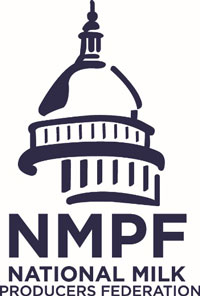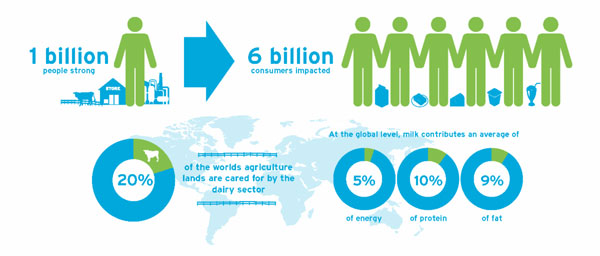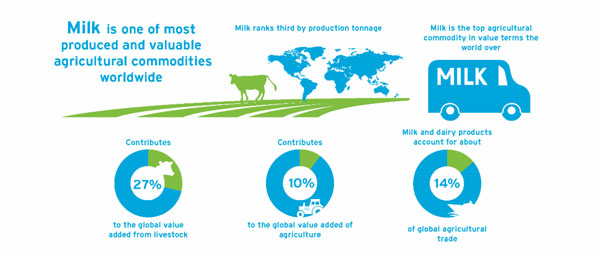
Despite the seasonal pressures to buy, buy, and buy, the holidays are best as a season for giving. Yes, that means solicitations – deserving charities fill mailboxes, and earnest pleas to remember the less fortunate have become staples of the holiday season.
But for many people in less-wealthy parts of the world, the property for which they can be most thankful is something people in rich nations take for granted: Dairy cows. For all the disparagement it receives in some, more affluent quarters, the fact is that dairy provides livelihoods and nutrition to hundreds of millions of people, many of them poorer, worldwide. Dairy lifts people from poverty and protects them from hunger. Dairy gives women jobs and sends girls to school. Dairy supports ecosystems and connects farmers to markets.
Stepping outside first-world problems for a moment, here for the holidays are a few thoughts on dairy’s global reach, and why we should be thankful for dairy farmers worldwide. (Thank you to Global Dairy Platform, an industry partnership that demonstrates dairy’s contribution to global food systems, healthy diets and sustainable livelihoods, for sharing data and graphics.)
- The world is home to about 133 million dairy farms, with about 600 million people living on those farms. Another 400 million additional people work full-time jobs throughout dairy’s value chain That means more than 1 in 8 people on the planet – 1 billion – are economically supported by dairy.

- Most developing-world dairy farms have herds of two or three cows. Farms with more than 100 cows represent less than 0.3 percent of all dairy farms worldwide.
- Of those 133 million dairy farms, 37 million of them are run by women.

- Milk and dairy products account for about 14 percent of all global agricultural trade.

- Finally, dairy is continually becoming more climate-efficient; greenhouse gas emissions have dropped by 11 percent per unit in the past decade. In North America the declines have been even steeper, falling not just per unit, but in total gross emissions as well.
Dairy is a big deal globally, just as it is in the United States. But dairy looks different in developing countries. It looks more basic, like something that’s essential to simple survival. Like something that should be nurtured and supported as a basic human right.
So when rich-world advocates call for sweeping changes to global diets or eliminating entire agricultural sectors -- even though such goals could be met in ways that would allow agriculture to thrive, reduce poverty and contribute to climate and nutrition solutions -- keep that in mind. This isn’t only about the 40,000 U.S. dairy farms that are the most carbon-efficient in the world. It’s about 133 million farms and a billion people, many who have much more to worry about than whether their beverage choices signal virtue to their privileged friends.
Let’s be thankful that dairy benefits everyone, regardless of their circumstances or wealth. Let’s work to encourage and sustain its success and celebrate its many contributions to our health and prosperity this Christmas season. Happy holidays, and a happy new year for dairy.
The National Milk Producers Federation, based in Arlington, VA, develops and carries out policies that advance dairy producers and the cooperatives they own. NMPF’s member cooperatives produce more than two-thirds of U.S. milk, making NMPF dairy’s voice on Capitol Hill and with government agencies. For more, visit www.nmpf.org.


